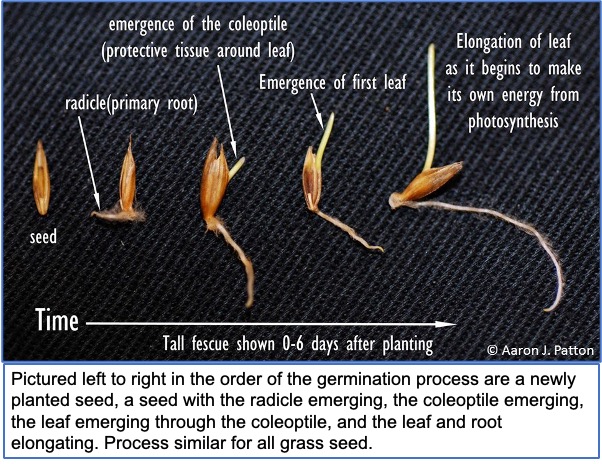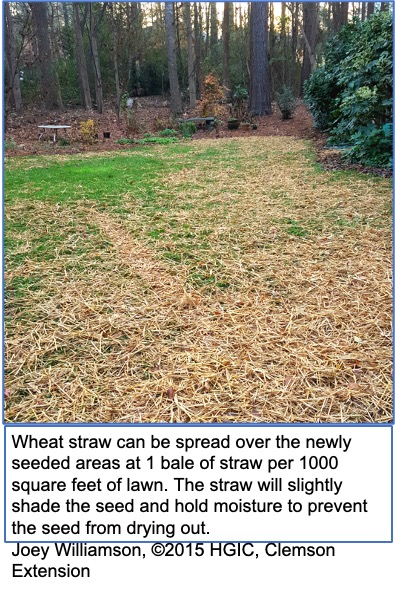Grass Grows in Pamlico
go.ncsu.edu/readext?881376
en Español / em Português
El inglés es el idioma de control de esta página. En la medida en que haya algún conflicto entre la traducción al inglés y la traducción, el inglés prevalece.
Al hacer clic en el enlace de traducción se activa un servicio de traducción gratuito para convertir la página al español. Al igual que con cualquier traducción por Internet, la conversión no es sensible al contexto y puede que no traduzca el texto en su significado original. NC State Extension no garantiza la exactitud del texto traducido. Por favor, tenga en cuenta que algunas aplicaciones y/o servicios pueden no funcionar como se espera cuando se traducen.
Português
Inglês é o idioma de controle desta página. Na medida que haja algum conflito entre o texto original em Inglês e a tradução, o Inglês prevalece.
Ao clicar no link de tradução, um serviço gratuito de tradução será ativado para converter a página para o Português. Como em qualquer tradução pela internet, a conversão não é sensivel ao contexto e pode não ocorrer a tradução para o significado orginal. O serviço de Extensão da Carolina do Norte (NC State Extension) não garante a exatidão do texto traduzido. Por favor, observe que algumas funções ou serviços podem não funcionar como esperado após a tradução.
English
English is the controlling language of this page. To the extent there is any conflict between the English text and the translation, English controls.
Clicking on the translation link activates a free translation service to convert the page to Spanish. As with any Internet translation, the conversion is not context-sensitive and may not translate the text to its original meaning. NC State Extension does not guarantee the accuracy of the translated text. Please note that some applications and/or services may not function as expected when translated.
Collapse ▲Over the past year, the Cooperative Extension office has received a common complaint from homeowners with their inability to germinate warm season grass seed (bermuda, zoysia, centipede). Most of these homeowners were attempting to make repairs or improvements to existing yards, but failed to achieve a stand of grass. While the issue might be common, so is the solution.
There are essentially four components you need to germinate warm season grasses: Patience, Temperature, Soil, & WATER. Warm season grasses require a minimum soil temperature of about 70 degrees Fahrenheit to germinate. However, at this low temperature, seed may take as long as 28 days to germinate. Optimal soil germination temperatures are closer to 86-95 degrees Fahrenheit, which typically do not occur until mid-June through August. For Pamlico County, this means your seeding window is from May through August, with the earlier portion of this period requiring more days to achieve germination.
“Good seed to soil contact” is a phrase that is often used to describe the relationship between germinating seeds and the soil it is growing into. Soil is the media by which plants find water, nutrients, and structure needed for growth. Without immediate access to soil, germinating seeds will quickly dry out or fail to find the nutrients they need to survive. This means you must work to place the seed into direct contact with soil through proper site preparation. If you have a bare area, then light tillage before seeding and raking of seed into the soil will help to level the site and place seed into direct contact. Attempts to overseed warm season grasses into an existing stand of grass is usually unsuccessful. The seed almost never contacts the soil, failing to germinate, or if it does, the small plant quickly dies from lack of water. To achieve the best possible germination success, you should remove all plants and competition from the planting site. This will require removal of existing sod through cultivation and/or non-selective herbicides like glyphosate.
When planning to seed warm season grasses, irrigation is required for success. If you are hoping for mother nature to provide timely rains, you will be disappointed. Seeds must absorb a sufficient amount of water before they will break dormancy. This is the reason we can store seeds for long periods of time. To achieve optimal germination, irrigation should be provided to retain a moist soil depth of about one inch. Earlier in the seeding window this might mean irrigating once or twice per day, but when temperatures get above 85 degrees Fahrenheit, irrigating 4 to 5 times per day could be required. Light sandy soils that dry out quickly need more frequent irrigation compared to heavier, blacker soils. Adding compost or organic matter to the seeded area can help retain moisture for longer periods of time, as well as mulches from wheat straw or commercially available seeding mats. When using mulch do not completely cover seed.
For more information on planting turfgrass and general maintenance, consider reviewing the NC State Extension “Carolina Lawns” publication. NC State Extension also has a website, TurfFiles, devoted entirely to turfgrass. From this website you can access numerous resources for controlling insects and disease, identification of weeds, and general recommendations for management of all turfgrass species in North Carolina. If you have additional questions or need help diagnosing issues in your yard, contact Daniel Simpson at 252-745-4121 or daniel_simpson@ncsu.edu.





